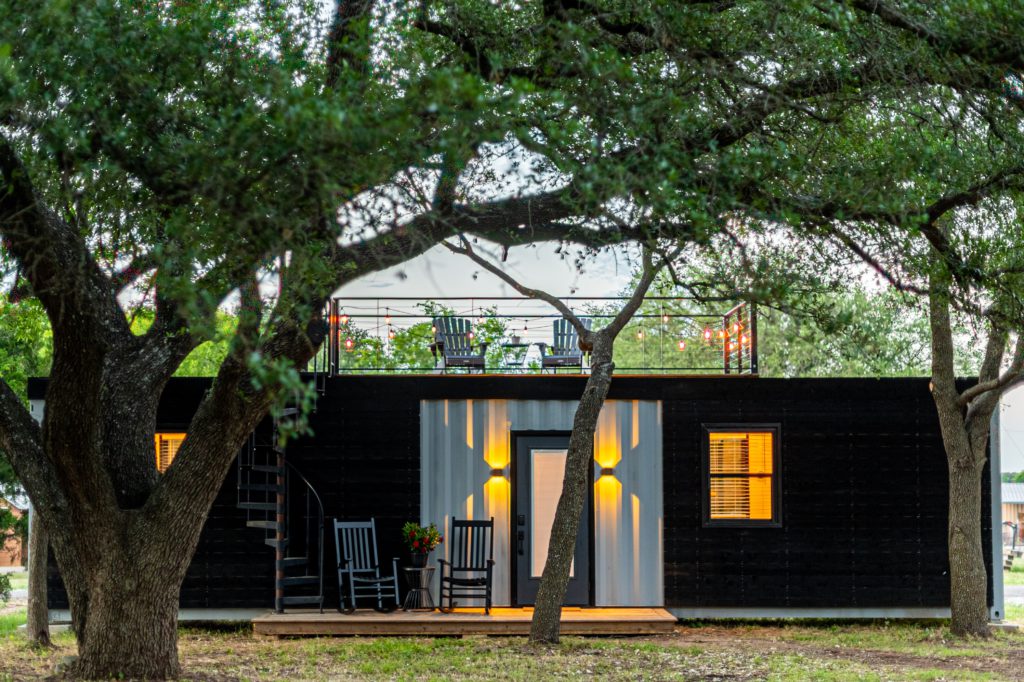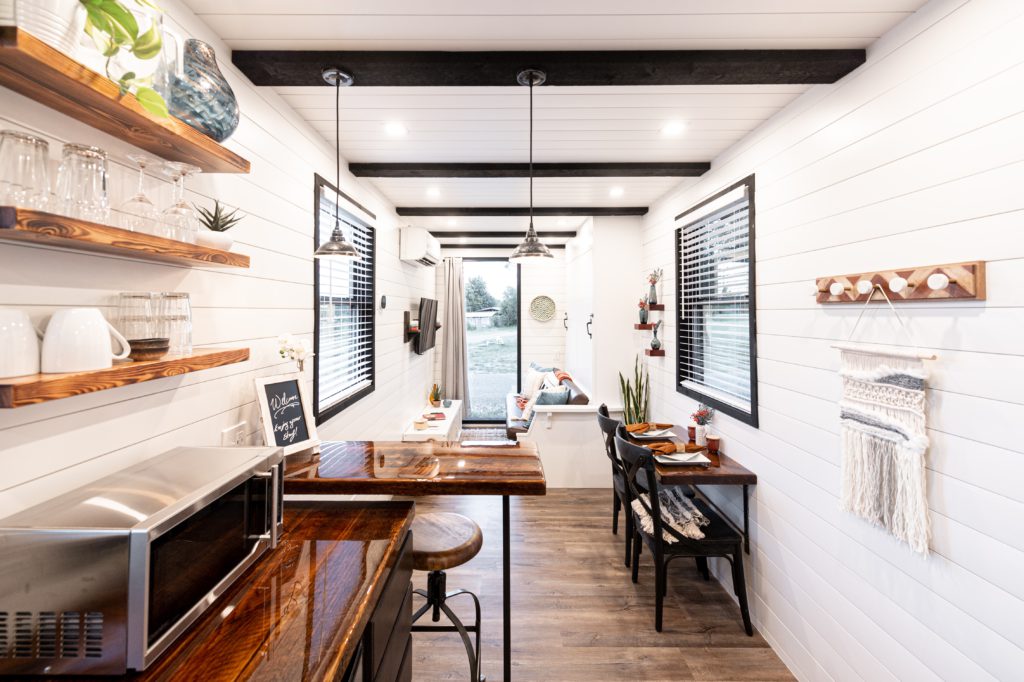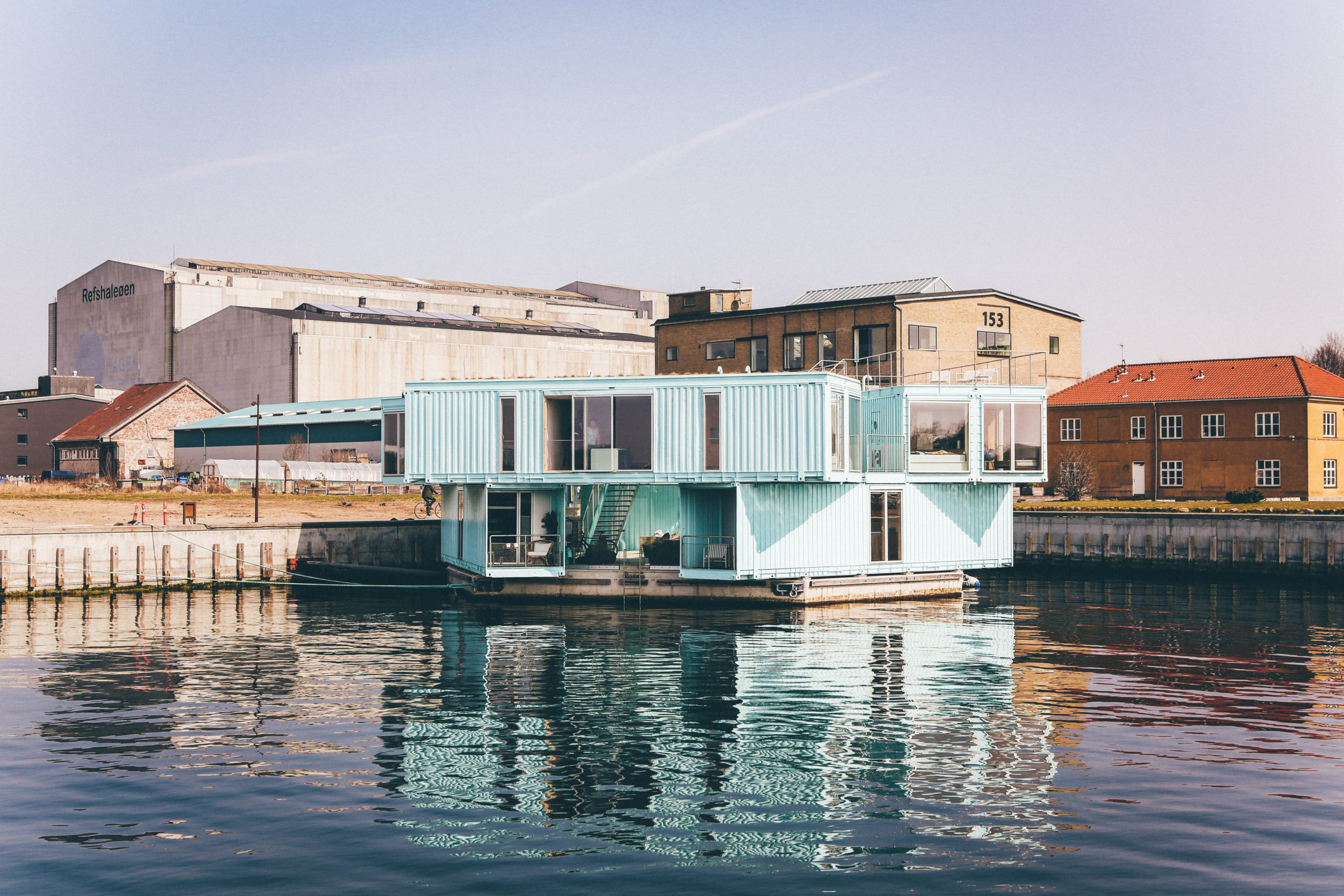|
|
These days, it seems like everyone wants to live in a sustainable container home. Spurred by rising housing costs, a trend toward becoming more eco-conscious, and — let’s face it — Instagram, the tiny house movement has exploded. But what does living in a metal box look like, and is the lifestyle compatible with being green?
What to Include in Your Sustainable Container Home

When you start examining the finer details of turning a shipping container into a house, it’s a bit like opening Pandora’s box. How old should the container be? Does it contain toxic chemicals? How can you insulate it in an eco-friendly way?
Luckily, there are several ways to build a green, sustainable container home without sacrificing comfort. After all, you don’t just want your space to be livable — you want it to be cozy!
1. Use a Secondhand Container
The first step of building a green container home is looking for a box that’s ready to retire. Buying a well-traveled container means you’ll be diverting it from the landfill. Using a new container, or even one that’s only taken a couple of voyages at sea, means you’re taking a perfectly usable shipping crate out of commission.
Metal is much harder to obtain than wood, so it’s not the most eco-friendly building material unless it’s otherwise destined for the trash.
2. Source Local Materials
The U.S. generates over 600,000 tons of construction waste every year, and some of that comes from shipping materials. If you’re going to DIY part or all of the building process, look to local construction companies for sourcing your supplies.
3. Install Sustainable Sourced Insulation

A shipping crate needs a lot of work before it’s move-in ready. Don’t worry — modular construction projects, like connecting two or more shipping containers to form a larger structure, are as much as 50% faster to complete than traditional builds. It’ll be done before you know it!
One of the main modifications you’ll need to make is adding insulation. That’s because steel is very conductive and shipping containers have thin walls.
Most contractors use spray foam to insulate the walls and roof, but this isn’t a very environmentally friendly choice. Instead, opt for straw bale or cotton-based insulation. You can also plant a garden on the roof to double as insulation and a way to reduce your carbon footprint.
4. Reduced AC and Heating to Suit Space
In a large house, heating and cooling costs can add up quickly. Living in a container home often translates to lower electric bills because it’s such a small area. You probably won’t need a full-sized air conditioner or heater, so go with a smaller, energy-efficient model to save space and lower your energy costs.
5. Self Sufficiency with Solar Panels
Since many container homes are built off the grid, homeowners often choose to install solar panels on the roof or in a nearby field. Solar panels last, on average, around 30 years. They may even exceed the life span of the shipping container itself, although well-cared-for container homes often survive up to 50 years without needing major repairs.
Another great aspect of using solar panels is that container homes are small, so it’s likely that just a few panels can power your entire house.
6. Use a Non-Toxic Sealing Primer

Shipping companies manufacture their containers with ocean travel in mind. Consequently, the paint often contains heavy metals like chromate and phosphorus — neither of which are good for you to inhale — to protect the containers against saltwater corrosion.
One study found that 12% of freight containers arriving in Sweden contained volatile substances at levels above established exposure limits. That means removing the paint in your container home could expose you to toxins. Instead, you’ll need to seal it in place with an environmentally-friendly primer.
7. Add a Rainwater Catchment System
One way to make a container home more sustainable is to install a rainwater catchment system. You can use it in addition to a traditional plumbing network, or it can serve as a standalone system to supply all of your water. It’s a great way to go green or even live off the grid.
8. Energy Efficient LED Bulbs
LED bulbs are perfect for a sustainable container home for two reasons — they’re eco-friendly and last a long time. As a bonus, they come in various color temperatures and brightness levels to liven up your space and make it feel bigger. Combined with strategically placed mirrors, you can make your house feel much bigger than it is.
9. High-Performance Windows
Most container homes are on the smaller side. That means you need well-insulated windows that won’t let in excessive heat or cold temperatures. In addition to making your home more comfortable, the right windows will also cut down on energy usage and reduce unwanted noise. Some even add privacy with a sun-protective tint.
Reflective windows are often the best bet in a container home. Make sure to insulate around the windows with weather stripping to prevent air leakage.
10. Space saving Appliances

As with any house, part of having a more sustainable container home is installing energy-efficient appliances. Outdated refrigerators, dishwashers, stoves, ovens, air conditioners, washers, and dryers can be highly inefficient, wasting energy and money. Upgrade to newer models to help the planet and get the best return on your investment.
In a container home, you should also consider buying smaller appliances to save on space. Maximize your square footage by purchasing stackable washers and dryers, a toaster oven that serves double duty in the kitchen, and a compact water heater.
To further save energy, plug your appliances into smart outlets that shut off when the devices aren’t in use. Doing so can prevent energy vampires from using a slow trickle of energy throughout the day.
Thinking Outside the Box

Living in a container home isn’t inherently sustainable. Like any other house, you have to include certain features to make it more environmentally friendly.
Beyond green buildings, you also have to commit yourself to live in a greener way. Ultimately, housing itself isn’t what will save the planet — it’s how you act that makes or breaks a sustainable lifestyle. Living in a container house just makes it easier to start.








No Comments